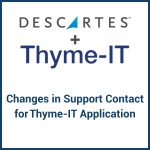How to correctly close out export movements in AES
Number: Ref: 23/2023
Subject: How to correctly close out export movements in the Automated Export System (AES)
Who should read: All those involved in submitting Export Declarations in AES
Related Notification: eCustoms Helpdesk Notification Ref: 12/2023
Issued by: eCustoms Helpdesk
Queries to: [email protected]
Issue Date: 13 September 2023
AES introduced a new process flow to confirm the exit of goods from the European Union (EU). This is done using the following messages for goods being exported outside of the EU.
Arrival at Exit (IE507) message
- The IE507 message should be lodged when the goods are at the Office of Exit from the EU and where Ireland is the Office of Exit.
- In Ireland, the IE507 message, can be completed:
– in AES
– by using the PBN for RoRo, or
– by using the Export Release Verification Service (ERVS) ‘Release Request’ for air and maritime traffic. - Where the Office of Exit is in another Member State (MS), the IE507 must be lodged by the trader at exit in that MS, by the means in use in that MS, and not to Irish Customs.
- The IE507 message can be lodged by the trader at exit which can be any party in the supply chain including, the carrier, haulier, declarant, exporter, Customs agent, logistic company, parcel operator, or driver.
- Only one IE507 message can be lodged per MRN. A subsequent IE507 for the same MRN will be rejected.
- Revenue has recently enhanced the MRN Look Up Service to allow trade to check the status of MRNs and thereby verify if the IE507 has been lodged. See Appendix 1 for further information
Exit Notification (IE590) message
- The IE590 message must be lodged after the goods have left the EU. This message must be submitted to Revenue’s AES where an Irish port or airport is the declared Office of Exit.
- The IE590 message should be lodged by the carrier or someone acting on the carrier`s behalf.
- The IE590 message can be completed:
– in AES
– by using the PBN for RoRo, or
– by using the Export Release Verification Service (ERVS) ‘Departure Confirmation’ for air and maritime traffic. - Where the Office of Exit is in another Member State (MS), the IE590 must be lodged by the carrier in that MS, by the means in use in that MS and not to Irish Customs.
- The IE590 message will be rejected if the IE507 message has not been lodged in respect of the export declaration.
You will find information about the role of the carrier in respect of AES export declarations in eCustoms Helpdesk Notification Ref: 12/2023.
Export Notification IE599 message
Once the IE590 message has been lodged, AES will send the declarant an IE599 ‘Export Notification’ message closing out the export movement.
Note: For export movements to be closed out correctly, supply chain communication is key. All parties in the export supply chain need to discuss and know who will lodge the IE507 and IE590 messages. The export MRN must be communicated to the parties creating these messages
What happens if AES export movements are not closed out correctly?
- The declarant/Customs agent will not receive an IE599 (Export Notification) message from AES. This will happen where the IE507 and/or IE590 messages have not been lodged.
- An IE582 ‘Request On Non-Exited Export’ message will issue to the declarant 90 days after the acceptance of the export declaration.
- Failure to respond to IE582 messages within 60 days could result in the cancellation of export declarations. This cancellation could impact on a business’s ability to provide proof of export if required.
How to deal with the IE582 ‘Request On Non-Exited Export’ message
There are 2 ways to deal with this message.
- The declarant can respond within 60 days with:
– a positive IE583 ‘Information On Non-Exited Export’ message if the goods have left the EU, and upload proof of exit using an EX583 (documentary proof could include proof of delivery, bill of lading or airway bill), or
– a negative IE583 ‘Information On Non-Exited Export’ message if the goods did not leave the EU.This information will be worked by our Control Officers. If deemed acceptable, AES will issue an IE599 ‘Export Notification’ message to the declarant or the Control Officer will cancel the export declaration as appropriate. - The IE507 ‘Arrival At Exit’ and/or IE590 ‘Exit Notification’ messages can be lodged where the Office of Exit is in Ireland. Once these messages are lodged, the export movement will be closed out, and the IE599 ‘Export Notification’ message will issue to the declarant.




